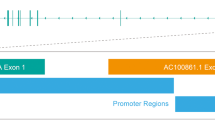Abstract
Annexin II receptor (AXIIR) is also known as chromosome 5 open reading frame 39 (C5orf39), it was originally identified as a cell surface receptor for Annexin II. AXIIR gene is peculiar to human. So far, the only known function about AXIIR is mediating Annexin II signal. In this study, we find that over-expression of AXIIR induces apoptosis, and this phenomenon is found in multiple human cell types. AXIIR is located in cytoplasm, binds to and activates pro-Caspase-8, which subsequently activates Caspase-3/7. AXIIR also down-regulates BCL2, BCL-XL, and activates Caspase-9, which finally activates Caspase-3/7 as well. Over-expression of BCL-XL does not affect AXIIR-induced apoptosis, whereas inhibition of Caspase-8 partially abolished AXIIR-induced apoptosis. AXIIR induces apoptosis independent of Annexin II and FADD. AXIIR is neither required for TRAIL-induced Caspase-8 activation. Although the transcriptional level of AXIIR in multiple cell types is considerably high, the translational level of AXIIR can hardly be detected. And inhibition of protein degradation pathways does not elevate AXIIR expression. Taken together, our observations reveal that besides being a cell surface receptor of Annexin II, AXIIR can also be located in cytoplasm and act as a novel inducer of apoptosis in human cells, partially through activating Caspase-8 in a manner that is different from conventional apoptotic pathways. The translation of AXIIR is generally tightly inhibited in cells. The physiological significance of such inhibition might be to prevent cells from apoptosis.











Similar content being viewed by others
References
Gerke V, Moss SE (2002) Annexins: from structure to function. Physiol Rev 82:331–371
Kwon M, MacLeod TJ, Zhang Y, Waisman DM (2005) S100A10, annexin A2, and annexin a2 heterotetramer as candidate plasminogen receptors. Front Biosci 10:300–325
Takahashi S, Reddy SV, Chirgwin JM, Devlin R, Haipek C, Anderson J, Roodman GD (1994) Cloning and identification of annexin II as an autocrine/paracrine factor that increases osteoclast formation and bone resorption. J Biol Chem 269:28696–28701
Lu G, Maeda H, Reddy SV, Kurihara N, Leach R, Anderson JL, Roodman GD (2006) Cloning and characterization of the Annexin II receptor on human marrow stromal cells. J Biol Chem 281:30542–30550
Shiozawa Y, Havens AM, Jung Y, Ziegler AM, Pedersen EA, Wang J, Wang J, Lu G, Roodman GD, Loberg RD, Pienta KJ, Taichman RS (2008) Annexin II/annexin II receptor axis regulates adhesion, migration, homing, and growth of prostate cancer. J Cell Biochem 105:370–380
D’Souza S, Kurihara N, Shiozawa Y, Joseph J, Taichman R, Galson DL, Roodman GD (2012) Annexin II interactions with the annexin II receptor enhance multiple myeloma cell adhesion and growth in the bone marrow microenvironment. Blood 119:1888–1896
Swisher JF, Burton N, Bacot SM, Vogel SN, Feldman GM (2010) Annexin A2 tetramer activates human and murine macrophages through TLR4. Blood 115:549–558
Adams JM (2003) Ways of dying: multiple pathways to apoptosis. Genes Dev 17:2481–2495
Bao Q, Shi Y (2007) Apoptosome: a platform for the activation of initiator caspases. Cell Death Differ 14:56–65
Thorburn A (2004) Death receptor-induced cell killing. Cell Signal 16:139–144
Strasser A, Jost PJ, Nagata S (2009) The many roles of FAS receptor signaling in the immune system. Immunity 30:180–192
Adams JM, Cory S (2007) The Bcl-2-regulated apoptosis switch: mechanism and therapeutic potential. Curr Opin Immunol 19:488–496
Suen D-F, Norris KL, Youle RJ (2008) Mitochondrial dynamics and apoptosis. Genes Dev 22:1577–1590
Leibowitz B, Yu J (2010) Mitochondrial signaling in cell death via the Bcl-2 family. Cancer Biol Ther 9:417–422
Basu A, Haldar S (1998) The relationship between BcI2, Bax and p53: consequences for cell cycle progression and cell death. Mol Hum Reprod 4:1099–1109
Youle RJ, Strasser A (2008) The BCL-2 protein family: opposing activities that mediate cell death. Nat Rev Mol Cell Biol 9:47–59
Chipuk JE, Green DR (2008) How do BCL-2 proteins induce mitochondrial outer membrane permeabilization? Trends Cell Biol 18:157–164
Kantari C, Walczak H (2011) Caspase-8 and bid: caught in the act between death receptors and mitochondria. Biochim Biophys Acta 1813:558–563
Kaufmann T, Strasser A, Jost PJ (2012) Fas death receptor signalling: roles of Bid and XIAP. Cell Death Differ 19:42–50
Chen M, Zhang L, Zhang H-Y, Xiong X, Wang B, Du Q, Lu B, Wahlestedt C, Liang Z (2005) A universal plasmid library encoding all permutations of small interfering RNA. Proc Natl Acad Sci 102:2356–2361
Zhai H, Acharya S, Gravanis I, Mehmood S, Seidman RJ, Shroyer KR, Hajjar KA, Tsirka SE (2011) Annexin A2 promotes glioma cell invasion and tumor progression. J Neurosci 31:14346–14360
Gobbi G, Mirandola P, Carubbi C, Micheloni C, Malinverno C, Lunghi P, Bonati A, Vitale M (2009) Phorbol ester-induced PKCepsilon down-modulation sensitizes AML cells to TRAIL-induced apoptosis and cell differentiation. Blood 113:3080–3087
Acknowledgments
We thank Dr. Samuel Zhang for kindly providing primary NHDF. We also thank the Core Instrument Facility in CAMS/PUMC in flow cytometry analysis. This work was supported by Natural Science Foundation of China (31050008), Grant 2007CB946901 from Major State Basic Research Development Program of China (973 Program), and the grant to M. Chen from Program for New Century Excellent Talents in University of China.
Conflict of interest
The authors declare that they have no conflict of interest.
Author information
Authors and Affiliations
Corresponding author
Additional information
Yuan Xiong and Cuiqing Fan contributed equally to this study.
Rights and permissions
About this article
Cite this article
Xiong, Y., Fan, C., Kong, L. et al. Annexin II receptor induces apoptosis independent of Annexin II. Apoptosis 18, 925–939 (2013). https://doi.org/10.1007/s10495-013-0846-2
Published:
Issue Date:
DOI: https://doi.org/10.1007/s10495-013-0846-2




